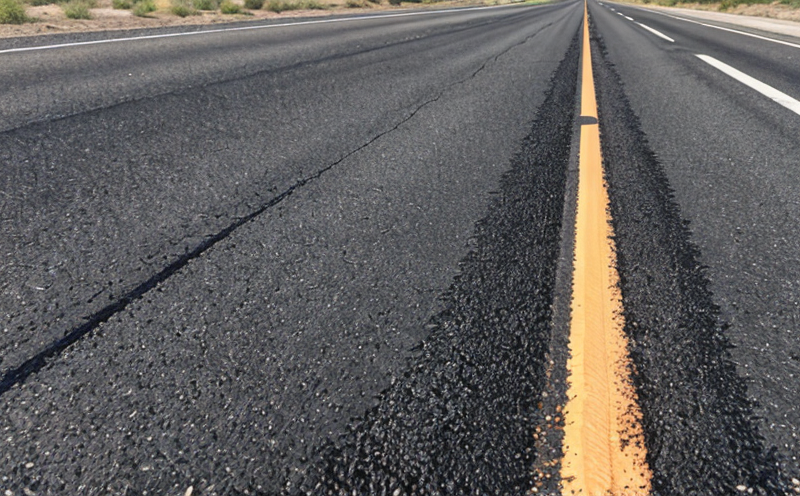EN 12697 Binder Drainage and Binder Loss Measurement
The EN 12697-1 standard provides a method for determining binder drainage and binder loss in asphalt mixtures. This is critical for ensuring the durability, performance, and sustainability of pavements. The test focuses on understanding how much liquid asphalt (binder) migrates through an asphalt mixture when exposed to water or moisture. Binder drainage can lead to premature aging, reduced skid resistance, and increased permeability, which are undesirable in pavement construction.
The primary goal is to measure the amount of binder that drains from a compacted specimen placed in a controlled environment under specified conditions. This test is essential for quality control and compliance with international standards. It helps ensure that asphalt mixtures meet specific requirements regarding binder retention, which are crucial for long-term pavement performance.
The EN 12697-1 test involves the following steps: Compaction of a mixture into a cylindrical specimen, placing it in a heated water bath, and then measuring the amount of binder that escapes from the top surface. The apparatus used includes a cylindrical mold, tamper, sieve, drying oven, balance, thermometer, and water bath.
The acceptance criteria for this test are based on predefined limits set by EN 12697-1. These limits ensure that the measured binder drainage values fall within acceptable ranges to guarantee the quality of asphalt mixtures used in construction projects. By adhering to these standards, laboratories and contractors can produce high-quality pavements that meet both performance and regulatory requirements.
Understanding the principles behind this test is essential for those involved in the building and infrastructure sector, particularly in the area of pavement testing. The knowledge gained from this test is vital for ensuring compliance with international standards such as EN 12697-1, which are widely recognized in Europe and internationally.
| Step | Description | Equipment Used |
|---|---|---|
| 1. Preparation of Specimen | The mixture is compacted into a cylindrical mold using a tamper. | Cylindrical mold, tamper |
| 2. Placement in Water Bath | The specimen is placed in a heated water bath for a specified time. | Water bath |
| 3. Measurement of Binder Drainage | The amount of binder that has drained from the top surface is measured. | Balance, thermometer |
Scope and Methodology
- Preparation of Specimen: The mixture is compacted into a cylindrical mold using a tamper.
- Placement in Water Bath: The specimen is placed in a heated water bath for a specified time.
- Measurement of Binder Drainage: The amount of binder that has drained from the top surface is measured.
Customer Impact and Satisfaction
The EN 12697-1 test is highly valued by customers in the building & infrastructure sector, particularly those involved in pavement testing. By ensuring that asphalt mixtures meet specific requirements regarding binder retention, this test contributes significantly to the quality of pavements used in construction projects. This leads to increased customer satisfaction and trust in the services provided.
Customers appreciate the detailed reports generated from this test, which provide valuable insights into the performance characteristics of asphalt mixtures. These reports are essential for making informed decisions about material selection and process optimization. The accurate measurement of binder drainage helps ensure that pavements meet regulatory requirements, thereby reducing the risk of non-compliance penalties.
Moreover, by adhering to international standards such as EN 12697-1, customers can be assured of high-quality results. This standardization fosters trust and confidence in the services provided, enhancing customer satisfaction and loyalty.
Environmental and Sustainability Contributions
- Eco-friendly Materials: Ensuring binder retention through proper testing helps reduce the use of additional binders in asphalt mixtures, contributing to a more sustainable approach.
- Pavement Durability: By measuring and controlling binder drainage, pavements can be made more durable, reducing the need for frequent maintenance and repairs.
- Reduced Carbon Footprint: Longer-lasting pavements mean fewer replacements over time, which in turn reduces the carbon footprint associated with manufacturing new materials.





